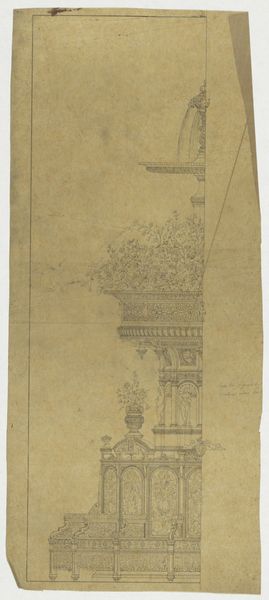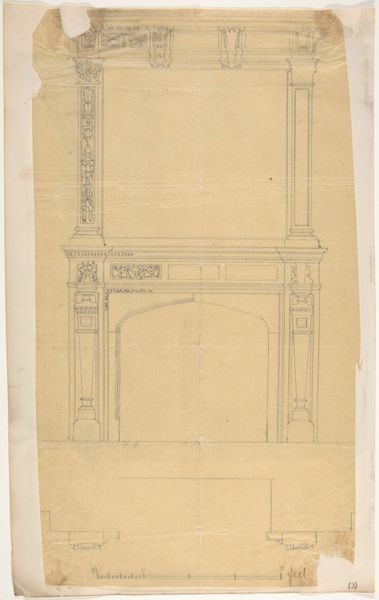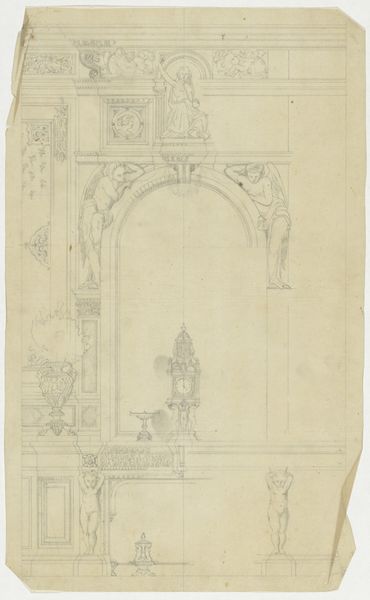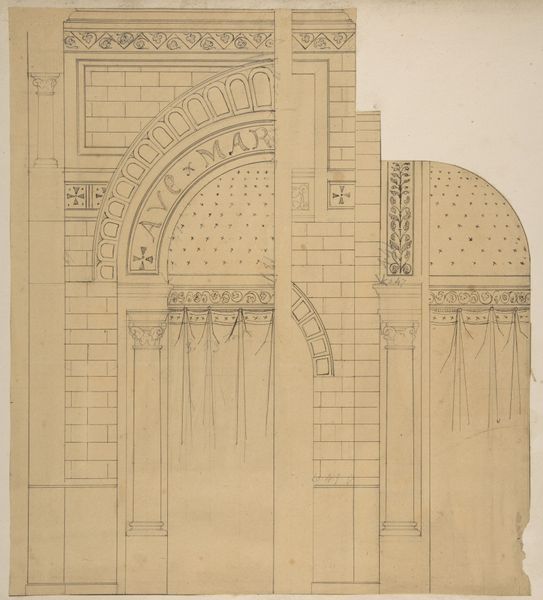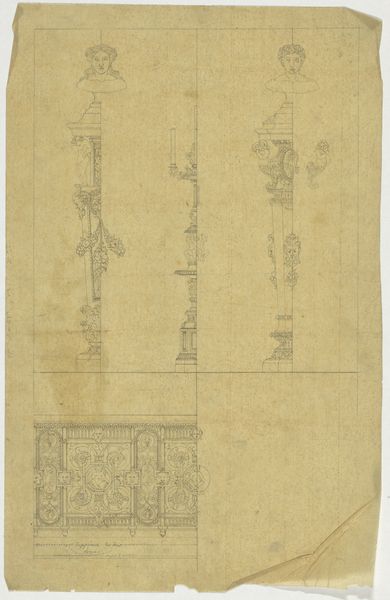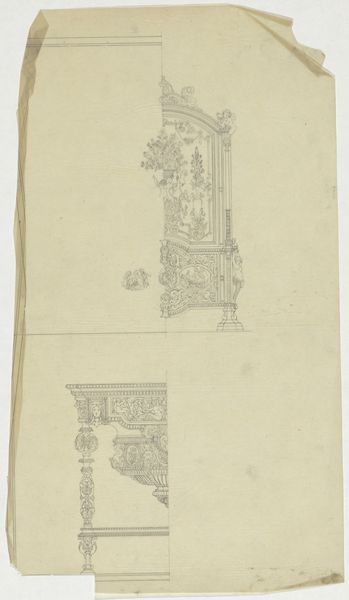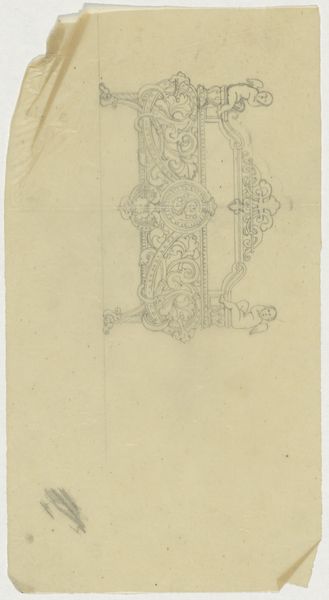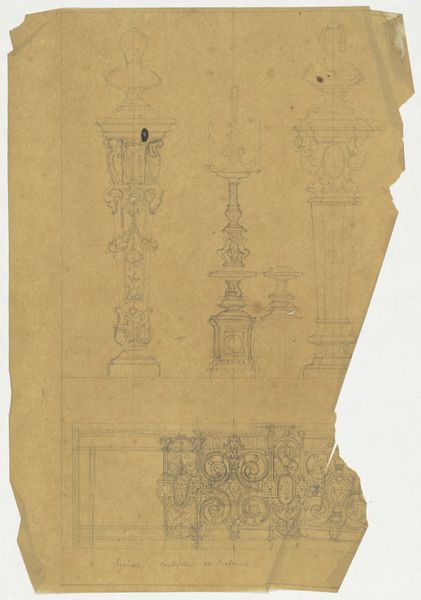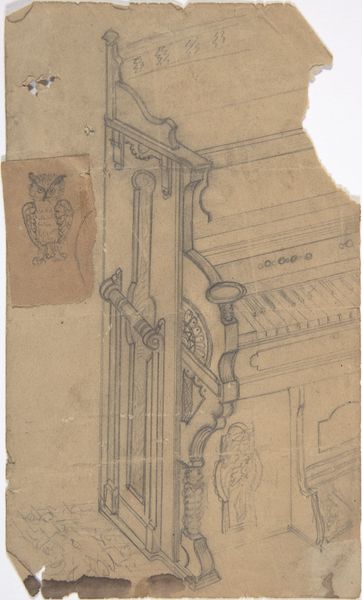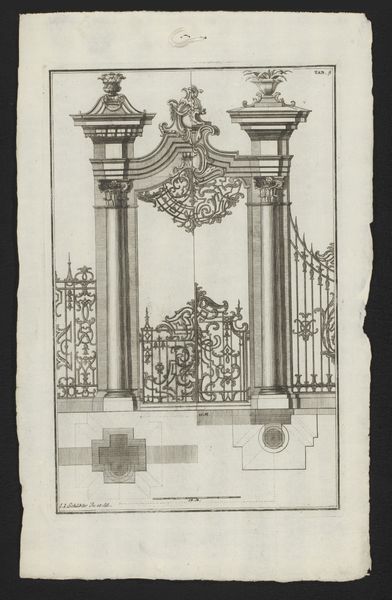
drawing, print, architecture
#
drawing
# print
#
classical-realism
#
form
#
geometric
#
line
#
architecture
Copyright: Public Domain
Curator: Look at this drawing, friends. This is "Design for Grate," a piece from somewhere between 1800 and 1900. Currently, it resides here at the Met. I love that we have it; there’s something deeply intimate about seeing a functional object rendered with such care, even grandeur. Editor: Immediately, I'm thinking about the materiality of absence here. A design implies production, labour, decisions about the raw materials used in the grate's construction itself. Who made this? For what patron? We’re peering behind the curtain into the practicalities, I think. Curator: Exactly! And that leads us to consider who these “anonymous” hands might have been, their training, their social standing. I imagine the artist hunched over this design by candlelight, their breath misting in the cold. They probably felt proud creating a beautiful item that would serve its owner with elegance and perhaps allow the coal or wood burner within a simple warmth to brighten their days, and lives. Editor: And what kind of labor did the fabrication demand? Did ironworkers embrace this level of ornamentation, or was this fussy and expensive? Someone had to cast and assemble the details. The drawing showcases the elite's visual demands placed upon what we might now simply call a “service job”. The artistic flourishes stand against this object being only useful or merely practical, which I am sure for the iron workers in this period it may have not mattered in the same regard or meaning it would to a high art viewer or patron, etc. Curator: That tension makes the piece even more captivating to me. There is that question; does art elevate function, or does function, in the very grit and fire that forges it, contain its own innate artfulness? Think of the fire's reflection, glinting on the dark metal—it becomes something that exists within something and its own nature. That dance has a magic all its own, don’t you agree? Editor: Oh, I do. Absolutely. This drawing allows us a glimpse into that magic’s origins and its execution. To contemplate these details today reminds me that it’s really people turning the wheels of production to feed appetites for the domestic comforts sought by the moneyed class. Curator: I see your point perfectly. And what’s left for us in that observation? Hope, I suspect. To feel less trapped by a division between what is artful and mundane; that instead beauty persists quietly as our actions intertwine with others, no matter their status or standing. Editor: Exactly. The layers of labor embedded in even such a “simple” design hum with that persistence of human interaction across boundaries, reminding us that design truly makes things…well, real, so that lives and experience become all the more vivid to the eye and hand.
Comments
No comments
Be the first to comment and join the conversation on the ultimate creative platform.
